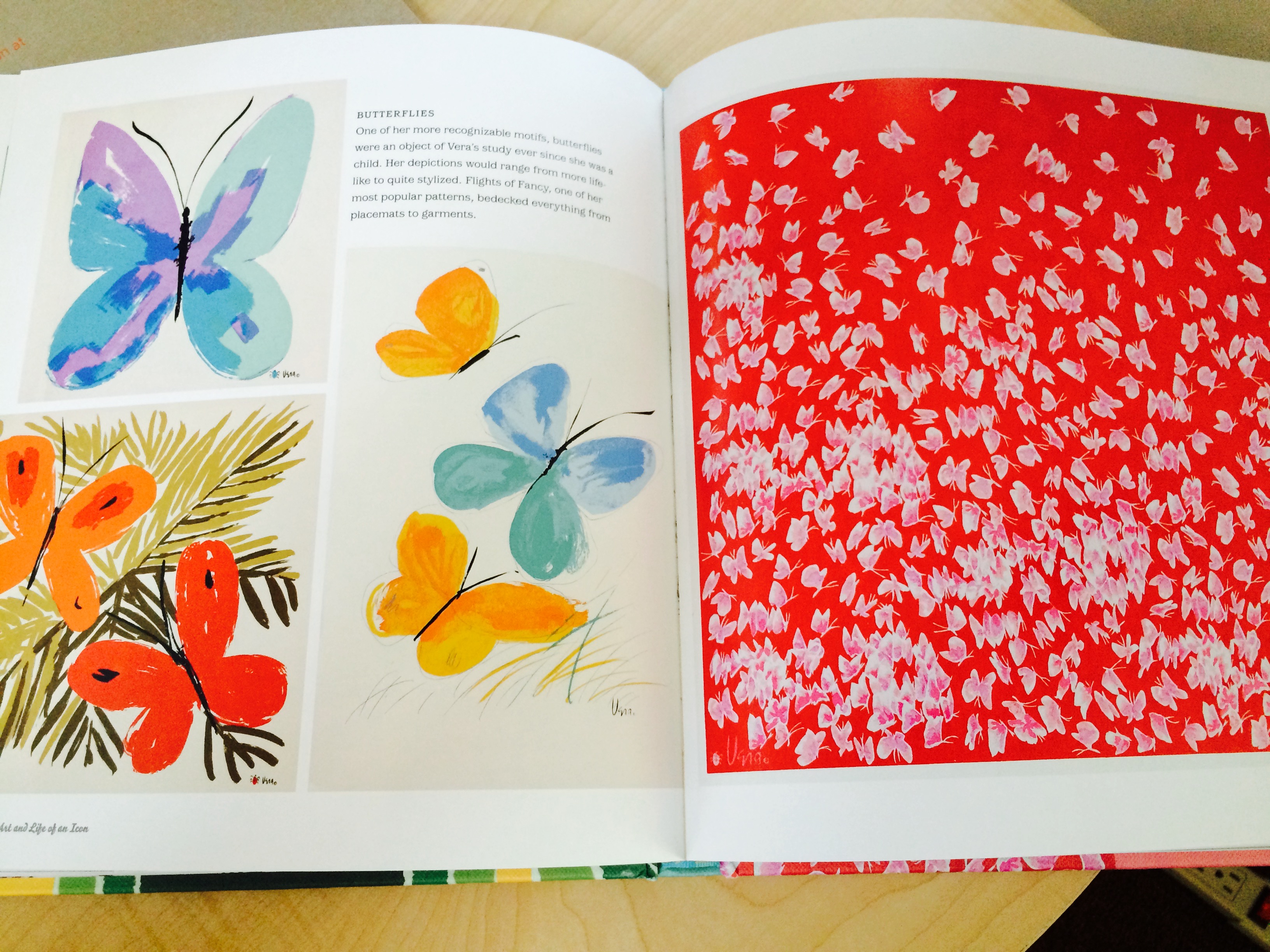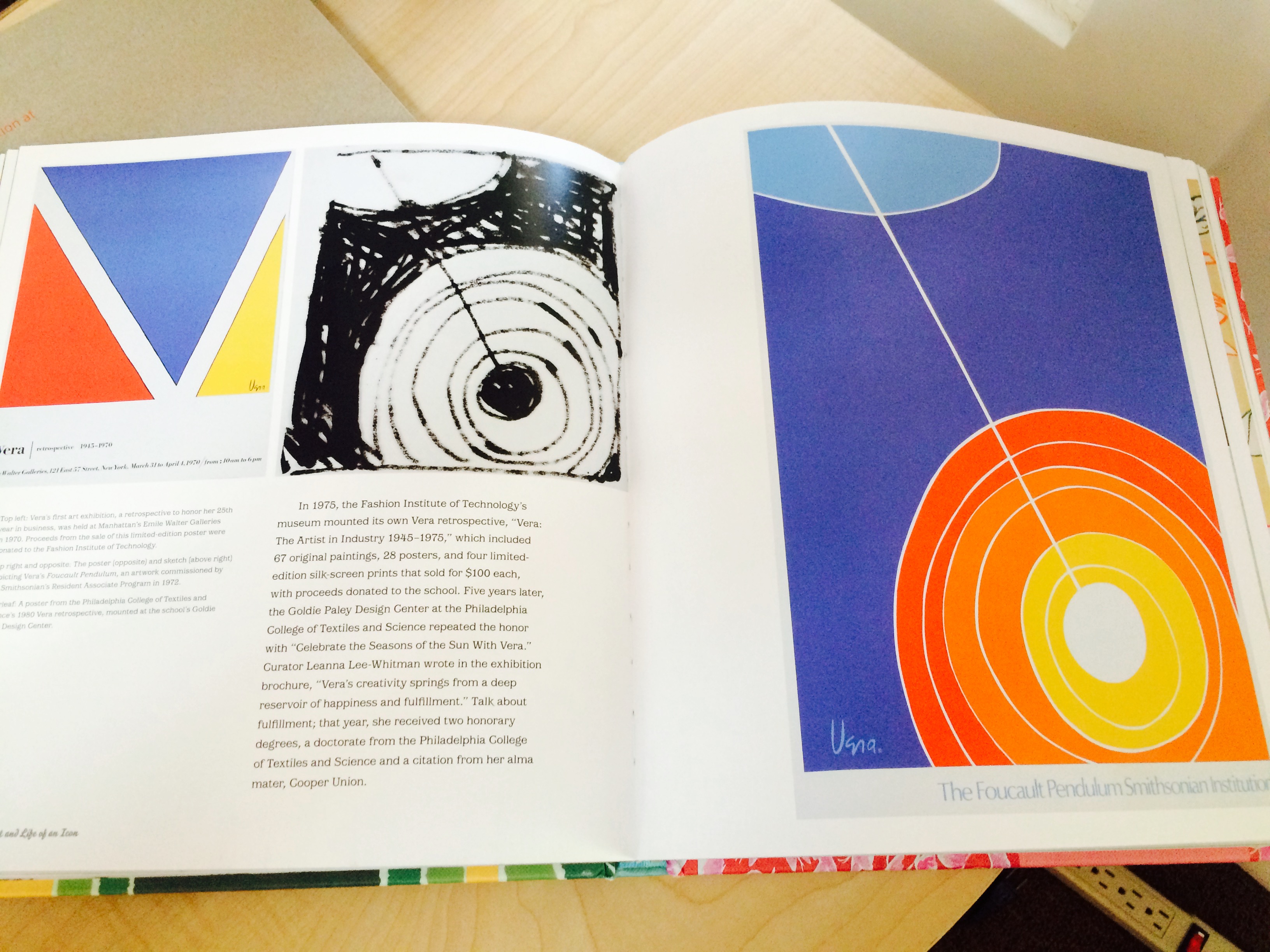August 12, 2015
I was surfing the web last week when I found an article on Vera Neumann published by Elle.com in Mexico. If you’re not familiar with ![]() , you are in for a real treat.
, you are in for a real treat.
In 2010 Susan Seid wrote a very beautiful book called Vera The Art and Life of an Icon. It is filled with wonderful and colorful photographs of Vera’s history. In it Susan states:
“Vera Neumann was an unlikely revolutionary–her tiny five-foot-tall frame typically dressed in mod tunics and a bold scarf, armed with a quick wit but a shy demeanor. But Vera—the innovator of cross-licensing and one of the most successful female entrepreneurs of her time–had a radical philosophy: fine art should be accessible to everyone, not just a select few. She believed that artwork should not be relegated to walls. Rather, people should surround themselves with art–wear it, eat off it, and sleep under it. And why not? Great art endures. It lifts your sprit and makes you feel better. Vera’s art certainly does. It is bright, happy, and inspirational.”
A year after Susan Seid’s book came out, I made note of Vera Neumann in my book Pantone: The 20th Century in Color. The chapter is aptly named “Colors and Coordinates,” where I said, “Designer and artist Vera Neumann didn’t seem to need any help understanding color interactions, or the way color creates a mood.”
Seid has quoted Vera as saying to the Washington Post in 1978, “Color is the language I speak best,” and, “Color is such a marvelous way of expressing emotion. We have so many problems in the world, color brings just a little bit of joy into our lives.”
I agree wholeheartedly.
If you are not familiar with Vera, a quick Google search will bring you into the colorful wonder of Vera Neumann.
Vera’s designs are still being licensed now, more than ten years after her death. Their longevity is her longevity. And for those of us who were around when she first came on the scene, it is a welcome reminder of a colorfully artistic era to see her famous logo still used today.








